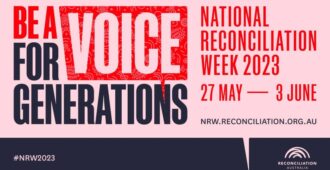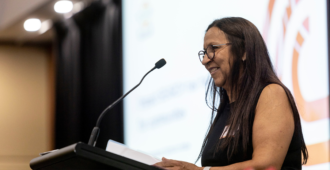
Ear health experts are calling for targeted screening programs in children during their critical learning years, as new research shows high rates of hearing loss in children from socio-economically disadvantaged backgrounds.
The research is published in Public Health Research & Practice, a peer-reviewed journal of the Sax Institute, in a special issue focused on hearing loss. The researchers at Macquarie University, Sydney, analysed screening results over a three-year period of 2489 NSW children from lower socioeconomic backgrounds. They found that the children, whose median age was 11, had high rates of hearing loss and middle ear dysfunction, with more than 40% not passing the hearing screening assessment.
Overall, 11.5% of children had hearing loss, while nearly 30% presented with middle ear dysfunction. Younger children were more likely to present with middle ear dysfunction, which was also more prevalent in colder months, probably due to respiratory infections. Aboriginal children and those from a migrant background were no more likely to be identified with hearing or ear problems in the screening assessment compared with other children.
Even mild hearing loss, which may be undetectable to parents and carers, can lead to poorer outcomes, the authors say.
“Throughout a child’s early years, undetected hearing loss during the critical period of neurocognitive development can have significant consequences for their speech and language development, educational achievement, and neurocognitive and social–emotional growth,” they write.
In socio-economically disadvantaged children, middle ear disease such as otitis media is more prevalent, while access to primary healthcare is poorer and educational supports are more limited, the authors say. At the same time, the classroom disruptions of the COVID-19 pandemic may further widen the gap in educational outcomes in the future, they add.
Currently, there are no national school screening programs for middle ear disease and hearing loss in Australia. Although the cost-effectiveness of rolling out such programs remains debatable, there are opportunities for targeted screening in at-risk populations, the authors write.
“Targeted screening programs can identify hearing loss during critical learning years, mitigating longer-term educational, social and mental health outcomes.”
But for such programs to be effective, a robust pathway to care must exist so that children with ear and hearing problems get the support they need, the authors say.
The paper is published in a special issue of Public Health Research & Practice on the theme of hearing loss and public health, produced in partnership with Soundfair, Macquarie University’s HEAR Centre and Macquarie University Hearing. Another highlight in this issue is a paper calling for urgent health measures to address growing age-related hearing loss in the community. The authors from UNSW Sydney say that while the number of people with at least mild hearing loss is projected to double by 2060, at least a third of adult-acquired hearing loss is preventable. A broad public health strategy is urgently needed to reduce long-term disability due to hearing loss, the authors write.
Another paper reports that parents and carers of Aboriginal and Torres Strait Islander children encounter major difficulties obtaining a diagnosis and treatment for chronic otitis media and hearing problems in young children, with guideline-recommended ear checks not carried out routinely.
And a paper on navigating the health system from a Deaf perspective finds that the COVID-19 pandemic has provided valuable lessons for communicating with the deaf and hard-of-hearing, particularly when people are wearing face masks.
In an editorial, the issue’s guest editors from Soundfair and Macquarie University call for a National Action Plan to address health inequities engendered by a society that “disables and stigmatises hearing loss”.
They note that change will only be accomplished through “collective action, authentic listening and engagement with those with hearing loss or deafness, and government and sector support”.
Please acknowledge Public Health Research & Practice as the source for any stories on our papers. The link to the published article on hearing loss in disadvantaged children is: https://doi.org/10.17061/phrp3152130
Media enquiries
Hugo Wilcken, Media Manager, Sax Institute
M: 0451 122 146
E: hugo.wilcken@saxinstitute.org.au
Nyssa Skilton, Editor, PHRP
M: 0408 331 262
E: nyssa.skilton@saxinstitute.org.au




